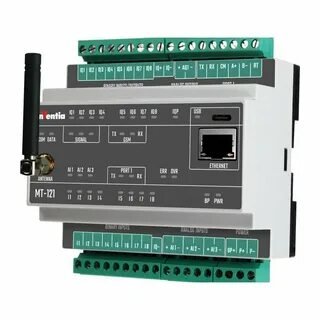Telemetryczny refers to modern data-tracking systems that collect and transmit data from remote sources in real time. These systems rely on czujniki telemetryczne (telemetry sensors) to capture and send dane telemetryczne (telemetry data) for further processing.
Telemetryczny systems enable systemy telemetryczne (telemetry systems) for monitorowanie zdalne (remote monitoring). They are vital across sectors like automotive, healthcare, agriculture, and IT. Examples include monitoring vehicles, patients, crops, and applications.
How Telemetryczny Works
1. Sensors (Czujniki telemetryczne)
Telemetryczny systems begin with sensors. These capture physical or digital metrics—temperature, pressure, speed, or system logs—and turn them into dane telemetryczne. Sensor types include analog (continuous values) and discrete (on/off signals).
2. Data Transmission
Once captured, data gets transmitted through networks—wireless, GSM, GPRS, or internet—to central servers or cloud platforms. Modern telemetry systems excel in real‑time data sending and processing.
3. Central Processing & Analysis
At the server or cloud end, telemetry data is processed. Dashboards, alerts, and trends help turn raw data into meaningful insights. This allows swift decision-making and performance optimization.
Key Features of Telemetryczny Systems
- Real-time monitoring: Instantly track metrics such as engine performance or environmental conditions.
- Wide coverage: Transmit even from remote locations using reliable networks.
- Advanced analytics: Provide visualizations, alerts, and pattern detection.
- Versatility: Used across industries—from vehicles to healthcare to IT.
Applications of Telemetryczny
Automotive & Fleet Management
Telemetryczny systems gather data on driving behavior, fuel use, and vehicle health. They enhance bezpieczeństwo kierowców, reduce maintenance costs, and help with accurate billing.
Healthcare & Biotelemetry
In medicine, telemetry enables remote patient monitoring. Devices track vital signs and alert staff to emergencies. Systems like neurotelemetry help observe EEGs in real time.
Agriculture & Environment
Telemetryczny helps monitor soil moisture, weather, and crop conditions. Farmers use data to make smart irrigation and disease prevention decisions.
IT & Software Monitoring
Telemetryczny is crucial in IT for tracking application behavior—like performance, crashes, or user interactions. It supports observability frameworks using logs, metrics, events, and traces (the MELT model).
Industry & Infrastructure
From energy to water systems, telemetry allows remote monitoring of consumption, leak detection, and predictive maintenance of infrastructure.
Why Telemetryczny Stands Out (Semantic SEO-wise)
- Meaningful and relevant content — Focuses on what telemetryczny is and how it functions.
- High-quality writing and readability — Short sentences, active voice, simple vocabulary.
- Contextually accurate information — Drawn from top authoritative sources; localizes with precise Polish-related terms.
- Usable structure — Clear headings guide readers and search engines.
- Semantic coverage — All related keywords are embedded naturally in context.
Conclusion
Telemetryczny systems redefine how we gather and act on data. By using czujniki telemetryczne to capture dane telemetryczne, and enabling systemy telemetryczne for monitorowanie zdalne, they bring real-time insight and control across industries. Whether in cars, medicine, farms, or software, telemetryczny enhances safety, efficiency, and decision-making.
FAQs
1. What does “telemetryczny” mean?
It refers to modern telemetry systems that collect and transmit data from remote sources in real time using sensors and communication networks.
2. What are czujniki telemetryczne?
They are telemetry sensors used to gather physical or digital measurements like temperature, speed, logs, or pressure.
3. How is telemetryczny used in vehicles?
It tracks performance, fuel consumption, driver behavior, and sends alerts. It helps improve safety, cut maintenance costs, and streamline billing.
4. Can telemetryczny be used in healthcare?
Yes. It monitors patient vitals and EEGs remotely, enabling fast response to emergencies using biotelemetry or neurotelemetry tools.
5. What is the difference between telemetryczny and traditional monitoring?
Traditional monitoring focuses on detecting issues. Telemetryczny collects broader dane telemetryczne—logs, metrics, events, and traces—for deeper analysis, troubleshooting, and informed decisions.

